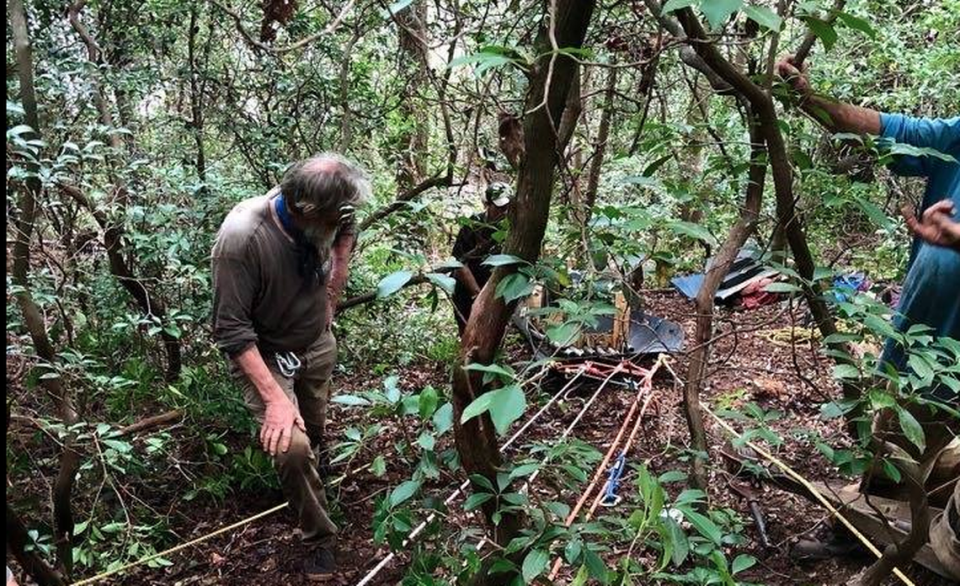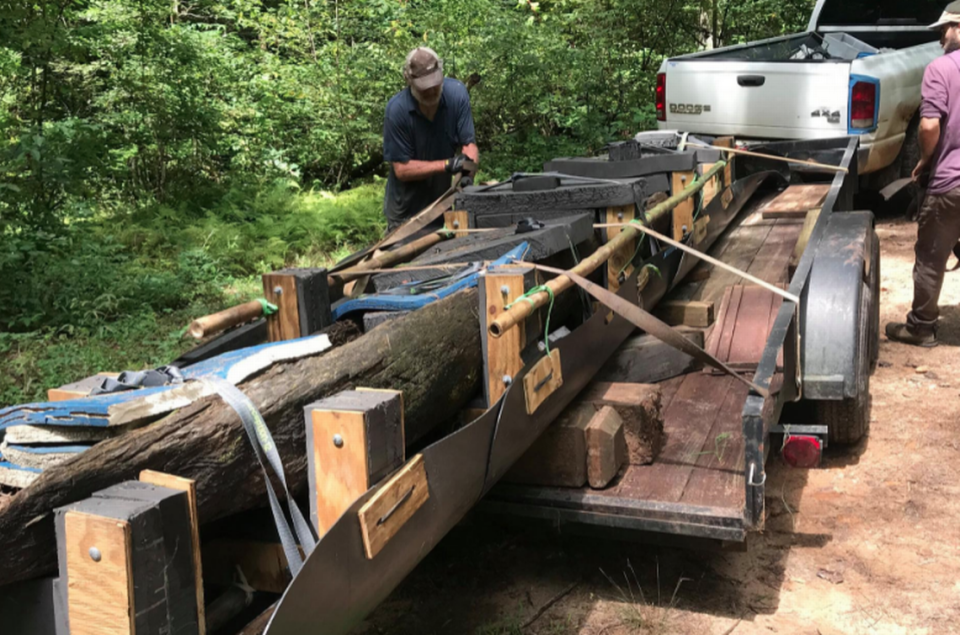How do you haul a 200-year-old canoe out of an SC river? It’s harder than you think
The worst part of getting an ancient heart pine canoe out of the Chattooga River was the second step — 100 yards up a 40 degree slope.
That’s steeper than some ski slopes. That’s so steep that if you slip on leaves, you’re going to slide all the way down.
That’s not to say any of the rest of it was easy.
A team of volunteers using equipment they made spent 13 full days over a six-week period recovering the canoe from the wild and scenic river that forms a border between South Carolina and Georgia.
“It was a nightmare,” said Buzz Williams, founder and chairman of the Chattooga Conservancy.
The canoe was found in July by some people running nearby heavy rapids. It is estimated to be 200 to 250 years old.
All sorts of ideas were discussed on how to extract the canoe, including using helicopters. Williams thought there had to be a simpler way.
After all, he’s met many challenges on the Chattooga before, not the least of which was figuring out how to retrieve the remains of a Pennsylvania girl who slipped and became stuck in a treacherous rock formation in 1999. The federal government, at the behest of Sen. Strom Thurmond, wanted to divert the river.
Williams and other local conservationists suggested building a temporary dam to ensure no harm came to the Chattooga, which gets the wild and scenic designation because it is undammed and unmarred. The girl’s remains were recovered even before the last piece of dam was installed.
That is the way of life in this remote western South Carolina community, which has protected the river through generations even as its popularity soared after the 1972 movie “Deliverance” was filmed there.

The canoe was in the water wedged under a rock, up against a tree. Volunteers were able to free it and float it to a section of the bank selected because there would be little harm to existing plants and trees.
Only saplings no bigger than 3 inches and mountain laurel were cut down. The canoe was placed in a specially made cradle of bamboo, plywood and foam sheeting. Highland Rescue Squad crafted a rope system with pulleys to hoist the package up the hill.

It took two days.
Then the canoe had to be taken upstream, down another hill and back into the river where divers could swim it across. Then, the team hauled it up another hill on the Georgia side, slid it 100 feet on a trail to a truck to drive it out.
Originally, the last 100 feet were going to be traversed using mules, but the mule owner got COVID.
Williams said if the government had managed the effort, tens of thousands of dollars would have been spent. His way? $100. All those who took part were volunteers.

Williams said it will never be known whether the canoe was made by Native Americans who lived in small settlements along the river until the mid-1700s or early European settlers who lived with them. The lack of clarity stems from the fact that the canoe has metal ax marks on it and a square-head nail pounded into it.
“It could have been influenced by early traders who were married into the tribe,” Williams said.
The canoe is similar to one found on the Chattooga in 2004. It was located in a less remote section of the river and took one day to extract from the river. It is on display in the Oconee Heritage Museum.
Clemson University mathematicians determined it weighed about 1,000 pounds. The recent find is denser wood and perhaps 1,300 pounds, Williams said. It could hold eight people despite its narrow design.
The South Carolina Institute of Archeology and Anthropology claimed the canoe since it was on the South Carolina side of the river.
The institute entered into a loan agreement with Chattooga Whitewater Shop in Long Creek, where the canoe will be displayed in a protective case.
On Saturday, the canoe can be viewed from 10 a.m. until 3 p.m. at the whitewater shop.

